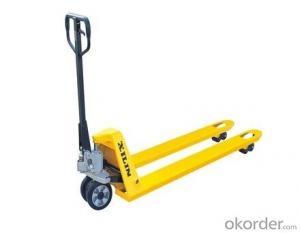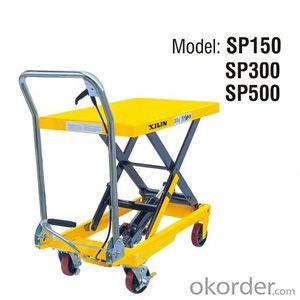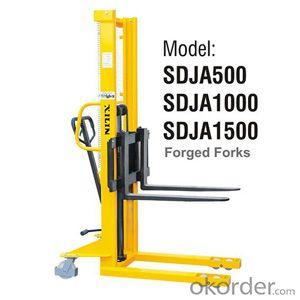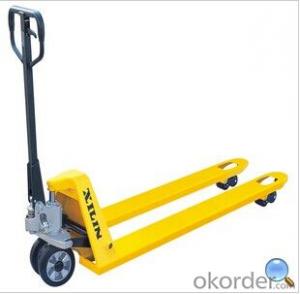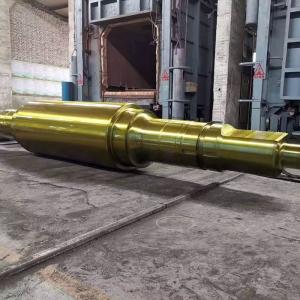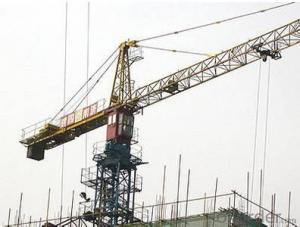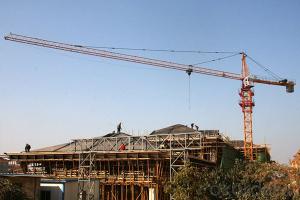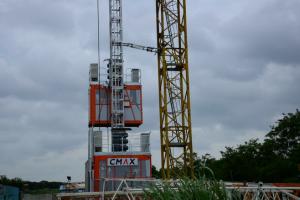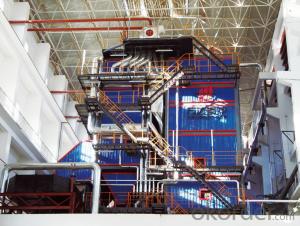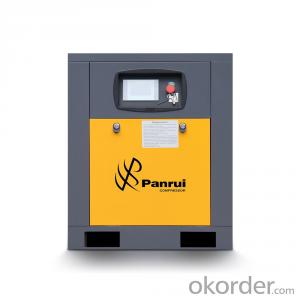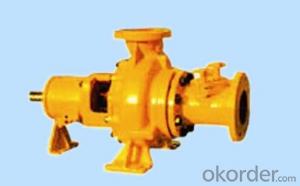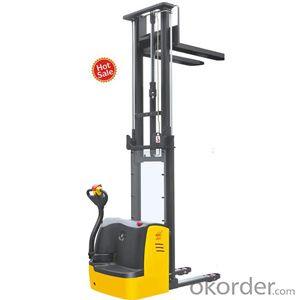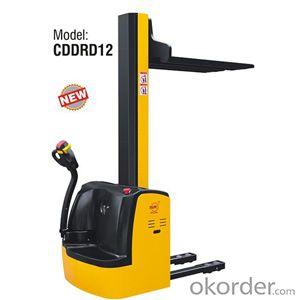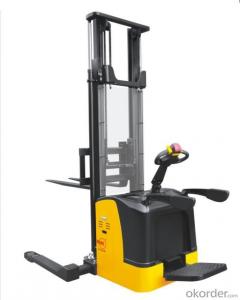Portland®NSE-Plate Chain Bucket Elevator
- Loading Port:
- Shanghai
- Payment Terms:
- TT OR LC
- Min Order Qty:
- 1 unit
- Supply Capability:
- 99 unit/month
OKorder Service Pledge
OKorder Financial Service
You Might Also Like
1. Technical Features
The NSE series high-speed plate chain bucket elevator is our company adopts serialization, standardization, and modular design concepts, and optimizes the design of the plate sleeve roller chain as the traction part of the vertical elevator. It is not only suitable for lifting general powder, small particles and small lump materials, but also can lift abrasive materials. Lifting capacity: 65~ 2300m3/h; operating speed ≤1.2m/s, lifting height ≤65m, material temperature ≤250℃.
(1) The transmission system adopts high-efficiency energy-saving motor supporting imported gearbox and magnetic coupling direct drive;
(2) Meet the requirements of full load and heavy load start, optional split manual auxiliary transmission; Equipped with Portland/Ketten-Wulf chain to ensure that the minimum safety factor of a single chain is more than 12 times;
(3) The chain and sprocket adopt standard forms and do not make non-standard designs; there are standardized supporting schemes for non-standard design products of the same industry, so that customers will no longer increase investment for non-standard products;
(4) The tail of the elevator adopts two types of internal and external tensioning devices; the head and tail wheels are all set to a split structure, which is easy to repair and replace.
2. Basic structure
The plate chain elevator is composed of running parts, driving device, head device, middle casing and tail device. The running parts are composed of bucket, chain and bolt components. The chain is the traction part of the elevator and one of the main load-bearing parts of the equipment. It is composed of multiple chain links. Each chain link is composed of a chain plate, a pin, a pin sleeve, and a roller. It is assembled into a 2~3 meters strip in the factory and assembled into a closed chain link on site.
Basic work flow: elevator inflow feeding, induced unloading, intensive arrangement of large-capacity buckets. When the material is lifted, there is almost no material return and digging phenomenon, and squeezing and collision between the materials rarely occur. The design of this machine ensures that the material is rarely scattered during feeding, lifting and unloading, which reduces the mechanical Wear, using plate chain type high-strength wear-resistant conveyor chain, greatly extending the service life of the chain and bucket.
3. Model specifications

Example: NSE1000×55000 Double
Indicates a NSE plate chain bucket elevator with a conveying capacity of 1000m3/h, a lifting height of 55000mm, and a double drive.
4. selection parameters
Table 1 Portland NSE type elevator powder material selection parameter
Elevator model | NSE50 | NSE100 | NSE200 | NSE300 | |
Bucket model | S-type bucket ① (for powder materials)-75% filling rate | ||||
Capacity m³/h② | 75 | 170 | 230 | 300 | |
Bucket | Width mm | 300 | 300 | 400 | 500 |
Volume L③ | 16.5 | 28.9 | 38.8 | 48.7 | |
Space mm | 304.8 | 400 | |||
Chain | Pitch mm | 76.2 | 100 | ||
Speed m/s | 1.0 | 1.06/0.94 | |||
Elevator model | NSE400 | NSE500 | NSE600 | NSE700 | |
Bucket model | S-type bucket ① (for powder materials)-75% filling rate | ||||
Capacity m³/h② | 380 | 510 | 640 | 770 | |
Bucket | Width mm | 450 | 600 | 750 | 900 |
Volume L③ | 69.3 | 92.9 | 116.5 | 140.1 | |
Space mm | 500 | ||||
Chain | Pitch mm | 125 | |||
Speed m/s | 1.17/1.04 | ||||
Note: ① S-type bucket lifting material type: raw meal, cement, mineral powder, etc. ② The filling rate of the conveying bucket in the table is 75% ③ The bucket volume is 100% volume | |||||
Table 2 Selection parameters of Portland NSE type elevator powder and small particles/lumps materials
Elevator model | NSE50 | NSE100 | NSE200 | NSE300 | |
Bucket model | D-type bucket ① (powder, small particles/small blocks)-70% filling rate | ||||
Capacity m³/h③ | 95 | 165 | 220 | 280 | |
Bucket | Width mm | 300 | 300 | 400 | 500 |
Volume L④ | 14.4 | 24.8 | 33.4 | 41.9 | |
Space mm | 304.8 | 400 | |||
Chain | Pitch mm | 76.2 | 100 | ||
Speed m/s | 0.81 | 1.06/0.94 | |||
Elevator model | NSE400 | NSE500 | NSE600 | NSE700 | |
Bucket model | D-type bucket ① (powder, small particles/small blocks)-70% filling rate | ||||
Capacity m³/h③ | 310 | 420 | 520 | 630 | |
Bucket | Width mm | 450 | 600 | 750 | 900 |
Volume L④ | 59.3 | 80.1 | 100.5 | 120.9 | |
Space mm | 500 | ||||
Chain | Pitch mm | 125 | |||
Speed m/s | 1.04/0.92 | ||||
Elevator model | NSE800 | NSE900 | NSE1000 | NSE1100 | |
Bucket model | D-type bucket ① (powder, small particles/small blocks)-70% filling rate | ||||
Capacity m³/h③ | 720 | 810 | 900 | 990 | |
Bucket | Width mm | 800 | 900 | 1000 | 1100 |
Volume L④ | 154.7 | 174.1 | 193.4 | 212.8 | |
Space mm | 600 | ||||
Chain | Pitch mm | 150 | |||
Speed m/s | Small particles 1.11/small lumps 0.99 | ||||
Table 3 Selection parameters of Portland NSE type elevator powder and small particles/lumps materials
Elevator model | NSE1200 | NSE1300 | NSE1400 | NSE1500 | |
Bucket model | D-type bucket ① (powder, small particles/small blocks)-70% filling rate | ||||
Capacity m³/h③ | 1080 | 1175 | 1265 | 1355 | |
Bucket | Width mm | 1200 | 1300 | 1400 | 1500 |
Volume L④ | 232.1 | 251.5 | 270.8 | 290.2 | |
Space mm | 600 | ||||
Chain | Pitch mm | 150 | |||
Speed m/s | Small particles 1.11/small lumps 0.99 | ||||
Elevator model | NSE1300L | NSE1400L | NSE1500L | NSE1600 | |
Bucket model | DA type bucket ② (powder, small particles/small blocks) 70% filling rate | ||||
Capacity m3/h③ | 1500 | 1625 | 1740 | 1860 | |
Bucket | Width mm | 1300 | 1400 | 1500 | 1600 |
Volume L④ | 363.4 | 391.6 | 419.8 | 448.2 | |
Space mm | 700 / 720 | ||||
Chain | Pitch mm | 175 /180 | |||
Speed m/s | Small particles 1.15/small lumps 1.04 or 1.07 | ||||
Elevator model | NSE1700 | NSE1800 | NSE1900 | NSE2000 | |
Bucket model | DA type bucket ② (powder, small particles/small blocks) 70% filling rate | ||||
Capacity m³/h③ | 1980 | 2100 | 2210 | 2330 | |
Bucket | Width mm | 1700 | 1800 | 1900 | 2000 |
Volume L④ | 476.7 | 504.8 | 532.5 | 560.9 | |
Space mm | 700 / 720 | ||||
Chain | Pitch mm | 175 / 180 | |||
Speed m/s | Small particles 1.15/small lumps 1.04 or 1.07 | ||||
Note: ① D-bucket lifting material type: cement, roller press circulating material, crushed granular material, clinker ② DA type bucket lifting material type: roller press circulating material, crushed granular material ③ The filling rate of the conveying bucket in the table is 70% ④ The bucket volume is 100% volume | |||||
,、QQ、、MSN、skype、
- Q:Urgent, please go to logistics expert, the question about the warehouse
- Buy a forklift truck with a solid price. You'd better consult with the company that makes the shelf and forklift
- Q:What is the relevant content of the flow of materials, storage and usage
- What is the relevant content of the flow of materials, storage and usage? Material flow, in lean as "one-piece flow," the core idea is how to make the material in the production process is in a state of flow, however it is very difficult, a more realistic approach is to ensure that in the process of circulation between the products is the least (quantity). The real meaning of storage is what you really need at the scene. Using a process is the sequence of steps to complete a task
- Q:The development of material handling
- Due to the improvement of industrial production automation degree and the expansion of production scale, in the process of the production and material handling cost has had a huge impact on the profit, to promote more and more used in the production of large enterprises, efficient, automated material handling machinery. Along with the material handling equipment manufacturing enterprises in the international market competition ability, and stable and continuous development of economic construction in developing countries the market need, the world market for material handling machinery in our country's overall demand will continue to increase.
- Q:What are the potential defects of the automated material handling system?
- In manufacturing and material handling, the automatic pilot (AGV) has become increasingly familiar. But the shuttle, which is introduced here, is based on the equipment that automatically carries the material in the path of the orbit. Machine commonly used in existent shelves, existent shelves for its high space utilization, accepted by a lot of storage and transportation unit, but forklift truck into the tunnel, because the space is narrow, there are shelves safe hidden trouble. In addition, using forklift and human handling inefficient, high cost, on the basis of the original shelves introducing automation machine, in order to improve the automatization level of the whole line production storage and transportation.
- Q:What is the rational and scientific classification of logistics facilities and equipment
- Generally be divided into logistics facilities and equipment, logistics equipment, logistics, warehouse facilities and equipment, logistics transportation facilities and container handling equipment, logistics equipment, logistics, circulation unitized equipment, port logistics facilities and equipment processing equipment, automatic sorting equipment, information platform and equipment. Logistics infrastructure refers to the service function of a supply chain and some of the supply chain process, meet the need of logistics organization and management, which has the function of comprehensive or a single place or organization collectively, mainly including roads, railways, ports, airports, distribution center and network communication, etc. Logistics infrastructure includes warehousing, delivery facilities, and computing and information communication equipment.
- Q:The function of material handling
- The logistics of mechanical products are very broad and the principle of improving the logistics system is: It enhances the operational training and safety of the handling personnel and increases the efficiency of labor.
- Q:Why should we emphasize unitization and standardization in material handling
- The logistics module is the dimension of the logistics facilities and equipment. The logistics module is for the rationalization and standardization of logistics, the standard scale of various factor dimensions of the logistics system. It is composed of various factors in the logistics system of, these factors include: the group, group the goods loading and unloading machinery, transportation machinery and equipment trucks, trucks, container and transport facilities, machinery and equipment for the cargo storage, etc.
- Q:Talk about how to cut the cost of moving materials.
- I think the main thing is to choose a range of suitable devices. If the moving objects and routes are relatively fixed, the use of the manipulator can be more efficient. The cost is naturally reduced.
- Q:The material needs to be transported, it is easy to produce dust.
- Subjective condition: to the extent that the transport effect is required, such as completely insulating the dust or trying to suppress the dust. What is the company's budget
- Q:What is the material handling and handling equipment?
- Lifting equipment Small lifting equipment | gantry crane | | bridge cantilever crane | 2 vertical mechanical unit transportation equipment | gravity conveyor power conveyor parts | | | other comprehensive transportation system
1. Manufacturer Overview |
|
|---|---|
| Location | |
| Year Established | |
| Annual Output Value | |
| Main Markets | |
| Company Certifications | |
2. Manufacturer Certificates |
|
|---|---|
| a) Certification Name | |
| Range | |
| Reference | |
| Validity Period | |
3. Manufacturer Capability |
|
|---|---|
| a)Trade Capacity | |
| Nearest Port | |
| Export Percentage | |
| No.of Employees in Trade Department | |
| Language Spoken: | |
| b)Factory Information | |
| Factory Size: | |
| No. of Production Lines | |
| Contract Manufacturing | |
| Product Price Range | |
Send your message to us
Portland®NSE-Plate Chain Bucket Elevator
- Loading Port:
- Shanghai
- Payment Terms:
- TT OR LC
- Min Order Qty:
- 1 unit
- Supply Capability:
- 99 unit/month
OKorder Service Pledge
OKorder Financial Service
Similar products
New products
Hot products
Hot Searches
Related keywords
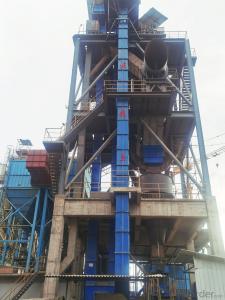





 CNBM (Hefei) Electromechanical Engineering Technology Co., Ltd.
CNBM (Hefei) Electromechanical Engineering Technology Co., Ltd.
